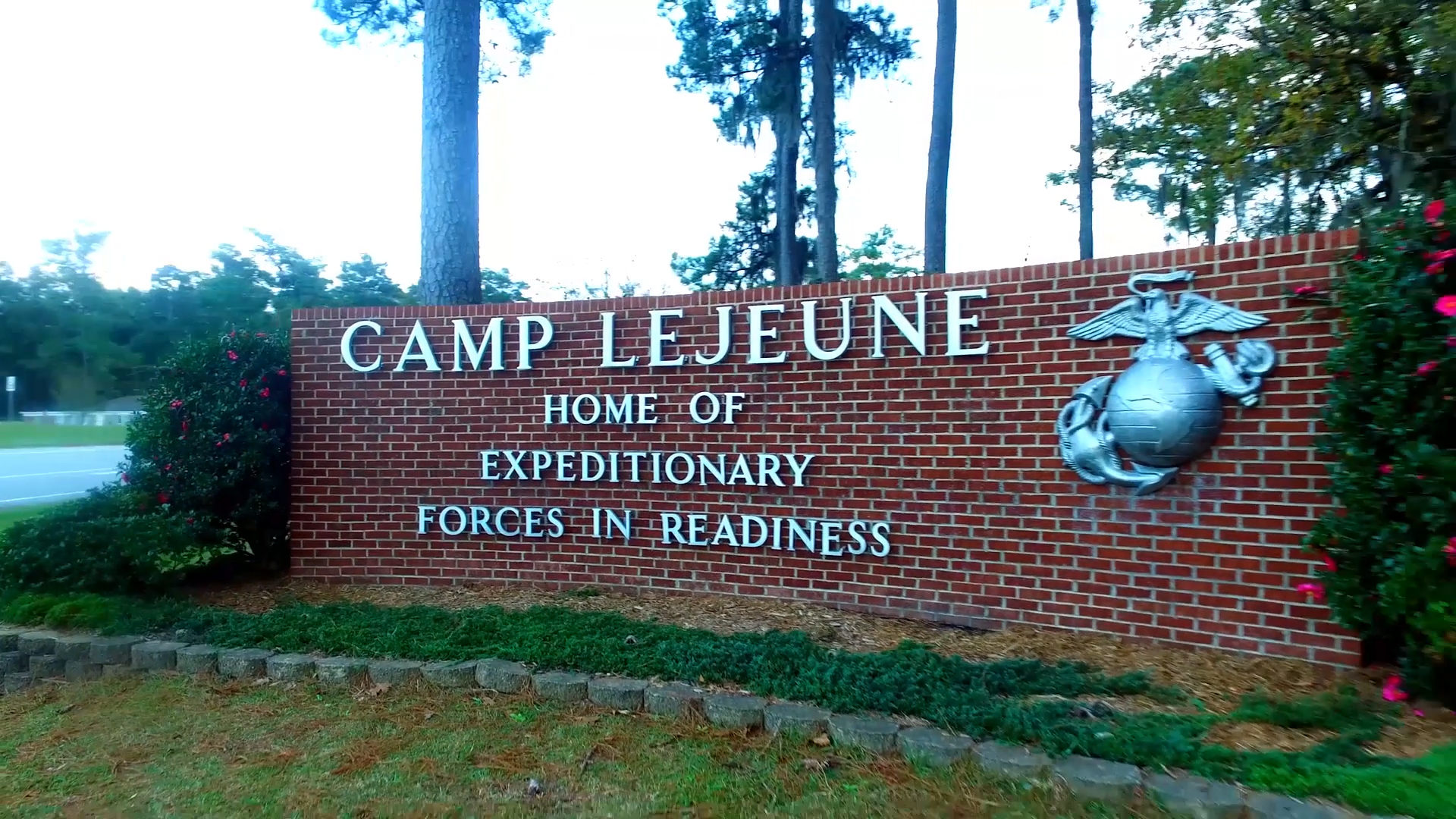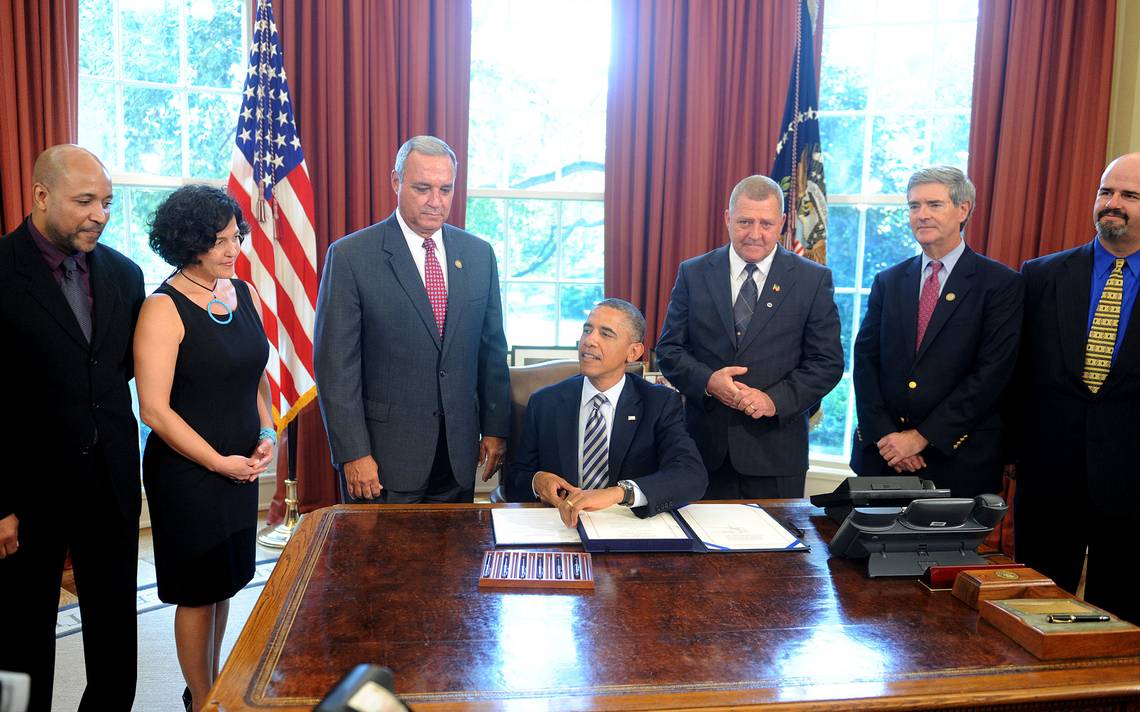For decades, active duty Marines, their spouses, and their children have lived in houses and neighborhoods brimming with toxic chemicals, jet fuel, oil and pesticides that have long been banned.
At the Laurel Bay Marine housing community near Beaufort, underground heating oil storage tanks had been leaking for decades — perhaps since they were installed in the 1950s until they were removed in the early 2000s — which could have caused the carcinogen benzene and possible carcinogen naphthalene to seep into and contaminate the soil. While the tanks have been removed, groundwater monitoring wells needed to be installed for almost 100 homes. The pesticide chlordane was also used to kill termites seven years after it was banned in the 1980s.

The Marines Corps says residents were not exposed to the contamination because drinking water is provided by the county, not from the groundwater. But residents aren't so sure. They talk about children playing in the dirt, eating vegetables they've grown in their backyards, and seeing a strange black sludge in their neighborhood.
Residents did not know to avoid using the soil for gardens, however, because they were never notified of the contamination, they said.
Now they're worried that contamination caused a range of illnesses, including migraines, anemia, and even possibly childhood cancer, among a laundry list of other diseases. Thus far, experts have not confirmed a causal connection between contamination and those illnesses at Laurel Bay.
Eleven former Laurel Bay residents filed a lawsuit in September against the community’s property private management companies, alleging that property management was aware of contamination but did not adequately inform residents. In response, the property management companies filed a motion in November to dismiss the suit.
When contacted by The Island Packet and The Beaufort Gazette, Atlantic Marine Corps Communities — one of the defendants in the suit and the company that manages Laurel Bay — did not respond specifically to the allegations in the suit, but provided the following written statement:
“AMCC is fully committed to the environmental health and safety of our residents. We investigate all resident complaints to ensure that they are properly addressed in a timely manner. AMCC continues to be proactive in responding to any concerns expressed by our families. Our responses to these concerns, as in all resident issues, are our highest priority. AMCC declines to further publicly comment due to active litigation.”
Nevertheless, the contamination at Laurel Bay is in no way an isolated incident. Pollution, contamination, exposure, failure to notify residents — it's a pattern of the Marine Corps that has spanned decades.
“The military in this country has been the cause of many pollution problems,” said Richard Clapp, professor emeritus of environmental health at Boston University School of Public Health. “It has been a problem for decades. It’s fair to say they’re one of biggest, if not the biggest, toxic polluter.”
Other military bases with a history of contamination include:
- At Marine Corps Base Camp Lejeune in North Carolina, where the Department of Veterans Affairs was ordered in January to pay Marine veterans who were residents $2 billion in government disability benefits after they became ill from drinking contaminated water. Veterans’ families and dependents were not eligible for the disability benefits.
- At the Marine Corps Base Hawaii in Kaneohe, families living on base filed six lawsuits last year alleging that property management did not warn them about contamination — including chlordane, heptachlor and heptachlor epoxide — near their homes. Not unlike at Laurel Bay, those lawsuits alleged breach of contract, violation of the landlord-tenant agreement and negligence.
- In Fallon, Nevada, which is located next to a Naval air station, two parents filed a wrongful death lawsuit in 2010 against providers of the jet fuel that was provided for the air station. Families believed that contamination caused a cancer cluster in Fallon in the late 1990s and early 2000s, but in 2003 the Centers for Disease Control and Prevention concluded there was no link between exposure and leukemia.
- At the Marine Corps Air Station in El Toro, California, hazardous jet fuel runoff washed into the nearby groundwater supply before 1990, threatening the health of those who lived on or near the station, the Los Angeles Times reported. The air station was closed in 1999, and in 2007, the Navy began a remediation project.
- At George Air Force Base near Victorville, California, jet fuel, benzene and other toxic pollutants have been found in nearby drinking water decades after the base was closed in 1992. The water "tasted like JP-4, jet fuel," one veteran told the Center for Public Integrity. The veteran had been stationed at the base in the 1970s.
These are only five of at least 400 active and closed military installations in the U.S. where toxic chemicals have contaminated — or are suspected of contaminating — groundwater and the environment.
Left in the dark
On top of that, residents on or near the affected military sites repeatedly say they were not informed of the contamination.
“A lot of times these regulatory agencies or officials like to get them back to their normal lives so they oftentimes (issue) statements that are made prematurely and don’t have enough information to make a valid assessment,” said Elena Craft, a scientist with the Environmental Defense Fund. “The government’s response has been routinely inadequate with regard to communicating risks and managing toxic exposures found on bases.”

Perhaps the worst case of contamination occurred at Laurel Bay's northern neighbor, Camp Lejeune in North Carolina. Over a period of more than 30 years, from 1953 to 1987, drinking water was contaminated by benzene and other pollutants far above federal levels.
Former residents claim the contamination caused cancer, multiple myeloma, non-Hodgkin's lymphoma and Parkinson's disease, and the U.S. Department of Veterans Affairs has admitted a connection between the contamination and these illnesses as well. Hundreds of mothers suffered miscarriages or gave birth to stillborn children. Many of the children who were born had health defects, like cleft lips or palates, as documented in the 2014 book "A Trust Betrayed: The Untold Story of Camp Lejeune." One baby was born without a cranium.
What's more, authorities knew about the contamination as early as 1980, McClatchy reported in 2010, but did not shut down the contaminated wells until 1984 and 1985. The Marine Corps said little to residents before 1984, leaving them clueless about the contamination findings in the early 1980s.
Further, the U.S. Navy asked government investigators to suppress information about Lejeune's toxic water in a letter written on Jan. 12, 2012. The letter said the information should not be shared for national security reasons.
“The Marine Corps understands the need to share information with the scientific community,” wrote Maj. Gen. J.A. Kessler, the Marines’ assistant deputy commandant for installations and logistics. “Prudence requires, however, that information sharing be within the rubric of responsible force protection.”

Jerry Ensminger lived on Lejeune’s base for more than a decade with his family. His daughter, Janey, died in 1985, just after her ninth birthday, from leukemia, a diagnosis dozens of other Lejeune children received. He said the military’s denial of wrongdoing is “their textbook standard operating procedure.”
Asked if the military robbed him of his daughter, the retired Marine said, “Absolutely.”
For years, the Marines contended that there was insufficient evidence to prove the illnesses were related to service at Camp Lejeune. “They want to hold the rank-and-file to the strictest standards, but when the hierarchy gets caught or the system gets caught, it’s ‘we’ll let it pass,’” said Ensminger, who devoted 25 years to the Corps.
In South Carolina, too, former Laurel Bay residents said they hadn't been notified of any contamination. More than a dozen parents were interviewed by The Island Packet and The Beaufort Gazette, and not one said they were informed about contamination by the Marine Corps or AMCC. Records show that although the Marine Corps and AMCC did send out a few letters of notification regarding the tanks from 2010 to 2016, almost nothing was said about the specifics of the contaminants benzene and naphthalene.

Big health consequences, big taxpayer costs
Nailing a link between contamination and illnesses is a near impossible task, according to most epidemiologists, largely because cancer and other ailments could have multiple different causes, either from genetic or environmental causes.
Still, residents have filed several lawsuits concerning the contamination — and in some cases, they've won. Earlier this year, VA was ordered to pay $2 billion in disability compensation to current and former residents of Lejeune with serious ailments.
Despite the high standard of proving a link between contamination and disease, former VA Secretary Bob McDonald determined that the case laid out "sufficient scientific and medical evidence" to establish a connection.
And finally, all of that comes with an additional hefty price tag: The cost of cleaning it all up.
The Department of Defense has already spent $11.5 billion cleaning up closed military installations, according to a report published by the U.S. Government Accountability Office in January. They predict the cleanup will continue to cost another $3.4 billion in the future.
But despite the stonewalling Ensminger endured by the Marines for years, he maintains that there is hope. Ensminger's advice: Pressure lawmakers.
In 2016, the federal government passed legislation providing health care for people who lived or worked at Lejeune from 1957 to 1987. The Janey Ensminger Act, as it was unofficially called, was named after Ensminger's deceased daughter. And Ensminger stood over the president's shoulder as he signed the legislation into law.
Kasia Kovacs: 843-706-8139, @kasiakovacs
Next Story: Marines take care of their own, don't they?
A young Marine family grapples with news of contamination at Laurel Bay